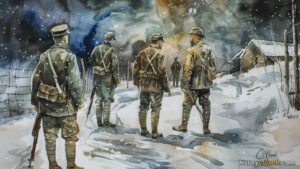The invention of the flying shuttle by John Kay in 1733 was a pivotal development in the textile industry during the Industrial Revolution. This innovative device allowed a single weaver to operate a loom more efficiently by quickly sending the shuttle carrying the weft thread through the warp threads. The flying shuttle significantly increased weaving speed and productivity, leading to larger-scale textile production. It also set the stage for subsequent advancements in textile machinery, driving the rapid expansion of the industry.
INNOVATIONS IN THE INDUSTRIAL REVOLUTION
The Industrial Revolution is one of the most significant events in all of world history and had a profound impact on the modern world. It began first in Britain in the 1700s but soon expanded to the rest of Europe and North America. Before the innovations of the Industrial Revolution, most production depended on water, wind or human energy. The businesses that existed at this time were called cottage industries. Cottage industries were an early stage of economic development in society in which workers produce a limited amount of goods in home-based businesses. However, by the mid-1700’s, new methods of production were being developed across Europe, especially in Great Britain. This transition led to the factory system, which was the creation of factories in centralized locations such as industrial towns and cities. This period of innovation continued throughout the 19th century and led to many new inventions by now famous inventors. In fact, one of the key features of the Industrial Revolution is the development of new inventions that led to more automation by machines. Significant inventions or innovations of the Industrial Revolution included: flying shuttle, spinning jenny, power loom, water frame, cotton gin, steam engine, telephone, light bulb, automobile, assembly line production and interchangeable parts.
INVENTION OF THE FLYING SHUTTLE BY JOHN KAY
A significant invention of the Industrial Revolution was the flying shuttle, which was invented by John Kay in 1733. John Kay was an English inventor and is remembered today for inventing the flying shuttle along with other devices important to the textile industry in England. In 1733, he developed a wheel shuttle, later known as a flying shuttle. The flying shuttle was used with the traditional handloom and helped improve weaving efficiency and reduced labor needs because it could be operated with only one operator. Weaving was the process of creating cloth out of many different strands of thread. In fact, the flying shuttle was the first device in the modern era that significantly improved the productivity and efficiency of the textile process. One of the main industries that benefitted from the Industrial Revolution was the textile industry. The textile industry was based on the development of cloth and clothing. There were many prominent inventions for the textile industry created during the Industrial Revolution, of which the flying shuttle was one.
Kay left England in 1747 because France was known to support textile innovations. Kay sold his patent to the flying shuttle to French manufacturers and it allowed for the mechanization in French textile production which allowed the French to make lots of fabric and textiles to clothe the population. In return, he was paid an ongoing pension. As such, the flying shuttle was developed and used throughout both England and France during the late 1700s.


